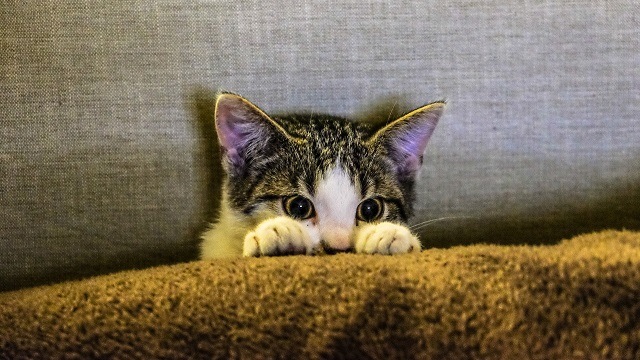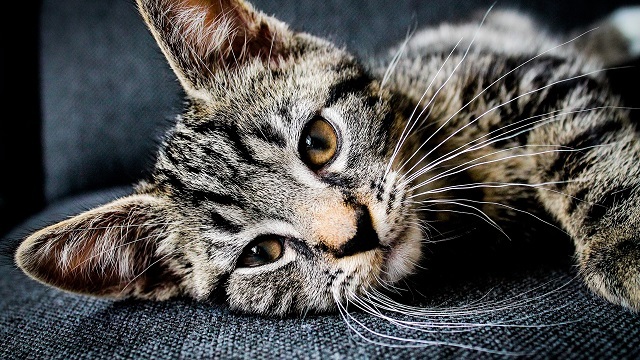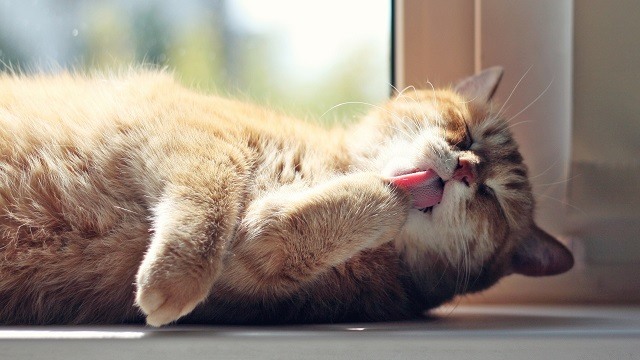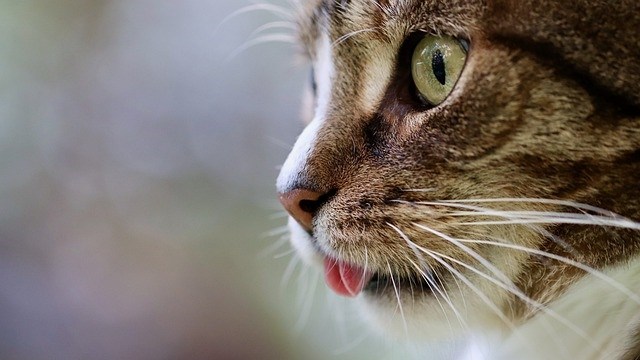Have you ever wondered exactly how your cat’s senses work? Why do they have so many whiskers? Or perhaps why is their tongue so harsh? Well, probably not! Let’s start a discovery journey through some unique features of the cat anatomy, that make our feline friends the exquisite specimens we all know and love!
Starting from the top: the ears

You must be familiar with the adorable triangle shape of your cat’s ears, the pinna. As it happens, it is not there just to melt our hearts with cuteness! Its main purpose is to capture soundwaves and funnel them into the ear canal and the middle ear. This ability is highly enhanced by the ear’s wide mobility range.
When reaching the middle ear, those soundwaves induce a vibration in a group of tiny bones. This enables the movement signals to be translated into electrical ones, which will then continue their path until reaching the inner ear, the nerves and finally the brain – where the magic takes place.
And have you ever thought about how your furry friend can perform such adventurous and risky balancing acts? The answer lies in the inner ear! It houses the vestibular system which is responsible for balance and orientation.
Cats’ desire for fanciness is quite remarkable… And to achieve that, they have developed two distinctive attributes. One is “Henry’s pocket” (a small skin fold with no obvious purpose on the outer base of the pinnae); the other is usually called “ear furnishings” (tufts of fur that grow on the interior of the pinna). If you have no idea what I’m talking about, I guess it’s time to literally grab your bestie by the ears (gently, of course!) and check it out!
Cat Anatomy – the lovely, iconic whiskers

Any self-respecting cat parent knows how tickling whiskers might be, but that is definitely not their main job. They are highly sensitive structures and the ultimate sensory tool! Whiskers enable felines to easily navigate without bumping into things, and also to gauge how tight a space is. The muzzle accommodates 24 whiskers, each side having 12 symmetrically distributed. This allows the cat to accurately measure the surrounding environment.
So if you ever thought about cutting a bristle, you better not – your cat might get disoriented and scared. Cat anatomy just wouldn’t be the same without them!
Leftie or rightie?

Cats tend not to like for their paws to be touched, and that’s actually because they’re one of the most sensitive parts of their body. The paws are packed full of nerve receptors which allows felines to feel vibrations and help with balance. And guess what? The front limbs also have bristles for sensory purposes!
A fun fact is that, like human beings, our domestic felines seem to have a marked preference for the right or left front paw! This comes into play when walking down stairs, stepping over an object or reaching for food. Females tend to prefer their right paws, whereas males are more likely to be lefties! But there’s much more to know regarding the cat anatomy…
A cat’s tongue – the best brush ever

It’s hard to miss the small sharp spines (papillae) that cover a cat’s tongue and give it that harsh, sandpapery texture. This unique design makes the tongue an excellent and efficient grooming tool, allowing the cat to easily untangle knots in their coat by just licking it.
In addition, the papilla also makes it possible for a large amount of saliva to be transferred to the fur. This not only aids in cleaning, but also lowers the body temperature through evaporation.
Such distinctive characteristics are actually the key for a revolutionary project that is being developed by a group of scientists – the tongue-inspired grooming (TIGR) brush. This utensil mimics the way a cat’s tongue works. There is also some evidence that it may help remove allergens from the fur and spread medications or lotions more thoroughly!
It’s common knowledge that a cat’s palate can sometimes be difficult to satisfy… Even if our little tigers only have about 480 taste buds – not that much when compared to humans, which have around 9000. The reason for a perky appetite may lie in the fact that palate is perceived and stimulated by more than one sense: smell and taste.
Flavours and textures

Still regarding the palate, did you know that felines can experience bitter, acidic and salty flavours, but not sweet ones? So why do some of us have sugary food thieves back home? The reason is simple: some studies show that cats can be drawn to the texture and the fat in sweet foods, such as pastry or ice cream!
So it’s definitely not just us humans who drool over the crunchiness of a cookie… But please keep in mind that some human edibles might be dangerous for our pets. In case of doubt you can always get in touch with Maven’s vet team!
Now that you’re aware of all these amazing peculiarities of the cat anatomy, we hope you’ll start thinking of them as even more fantastic and mesmerizing creatures! 🙂
Maven is all about proactive pet care. Be your best friend’s best friend by giving them 24/7, high-quality, industry-leading vet care to improve their mental health, physical health and more. No more frantic googling or unneeded stressful visits to the vet – Maven helps you save hundreds while also ensuring your pet lives the best life possible. Get your kit now!




Does Maven require pets to be chipped to work? Is it a smart collar? My two Bombay cats live indoors. Thank you!
Hi Athena, we’re happy to answer your questions! No, Maven does not require pets to be chipped to work; it consists of two devices (the Maven Smart Collar for your pet, which tracks their location, activity and behavior; and the Maven Home basestation, which makes sure the data is always available to you and to your Maven vet via Wi-Fi). We hope this helps – if you have any further questions, feel free to contact us directly at [email protected]! 🙂 Best regards
A very interesting read!
The more you know! Thanks
cool stuff
😻😻😻